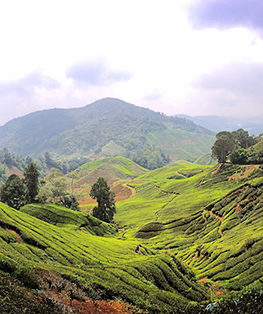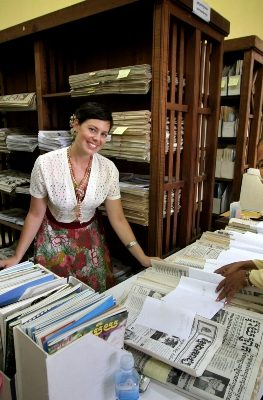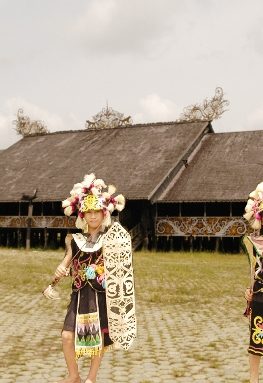Published on November 28, 2023
Made up of 7,641 Southeast Asian islands, the archipelagic nation of the Philippines is known for its diverse cultures and ethnicities. Rich in history, European and Asian influences have shaped the Philippines of the modern day; for four centuries, it was ruled intermittently by Western powers like Spain, Great Britain and the United States. The Philippines gained its independence in 1946, but its legacy of colonial rule, bolstered by the country’s fragmented geography, has created a unique culture famed for its extraordinary depth and range. From Baroque churches to ancient rice terraces to forts left over from Spanish rule, the Philippines is full of cultural wonders.
Without further ado, here are five fascinating cultural wonders of the Philippines, perfect for travellers looking to dive deep into this country’s lore.
Baroque Churches of the Philippines
As attractions that perfectly exemplify the East-West influences of Filipino culture, the Baroque Churches of the Philippines are must-visit destinations for travellers interested in everything from history to anthropology. These four churches, located in Manila, Luzon, and Iloilo, are timeless treasures that have witnessed the rise and fall of the Philippines’ colonial rulers. They are noted for their unique fusion of European Baroque elements and indigenous Filipino motifs. The churches were built during Spanish colonial rule, from about the 16th to 18th centuries, when Spanish missionaries sought to create proper, long-lasting places of worship. With the help of Filipino locals and Chinese migrants, these churches were designed and built, creating a whole new architectural style.
Known for their ornate details, massive buttresses, and fortress-like fortifications, these four churches had lasting impacts on religious practice and building styles. Testaments to Filipino history, the Baroque Churches of the Philippines offer visitors important glimpses into the spiritual and cultural evolution of the country.
Historic City of Vigan
Located on the western coast of Luzon, the largest island in the Philippines, the city of Vigan transports visitors straight back in time to the era of Spanish rule. A UNESCO World Heritage Site, the historic city of Vigan is the best-preserved example of a planned Spanish colonial town in Asia. Its cobblestone streets, elegant churches, open plazas and ancestral houses create an immersive experience of life in the Philippines of the 16th century. Like the Baroque Churches, Vigan is a fusion of Spanish, Filipino and Chinese influences. Vigan remains bustling today, an important trading town, serving as a veritable hub of culture and much more.
As you stroll through Vigan’s beautiful, labyrinthine streets, you can visit sites like the Syquia Mansion Museum, an opulent stone structure once home to a former president, the centuries-old Santa Maria Church, the National Museum of the Philippines, and much more. A visit here will surely be both enlightening and fun; travellers will gain insight into the influences that shaped Vigan and the country in the preceding centuries.
Rice Terraces of the Philippine Cordilleras
Perfect for lovers of nature and culture alike, the rice terraces of the Philippine Cordilleras are a spectacular sight to behold and ponder over. Consisting of a complex of rice terraces throughout the Cordillera Region of Luzon, this cultural wonder is one of the must-visit destinations of the Philippines. Though experts disagree on whether they were constructed 2,000 or 400 years ago, they are still evidence of incredible human ingenuity, known for being hand-carved and irrigated. A marvel of engineering and sustainable agricultural practices, the rice terraces represent hundreds or thousands of years of human communities.
The culture of the Cordillera Region is also different from what you’ll find when you visit the Baroque Churches or the historic city of Vigan, for example. Home to the native Ifugao people, this area retains cultural practices and traditions that date back to before Western colonizers arrived. One of the best ways to explore the area is to stay for a few days, interacting with locals and traversing the trails that wind through the rice terraces. A visit here will provide a profound appreciation of the Philippines’ agricultural and cultural heritage.
Camiña Balay Nga Bato
Travellers visiting the Filipino city of Iloilo must stop by Camiña Balay Nga Bato, a living museum that highlights Filipino culture. Built in 1865, this ancestral house has since been turned into a museum, with a name that means ‘house by the river.’ Another example of Filipino-Spanish architecture is this cube-shaped structure, which offers a glimpse into the lives of Filipino elites during Spanish colonial rule. It is known for its wide variety of delicacies and other treats, all native to the Illonggo people, as well as its production of handwoven cloths.
From cultural delicacies to traditional goods, Camiña Balay Nga Bato provides an intimate look inside Filipino culture. Visitors can wander through well-preserved rooms adorned with antique furniture, religious artefacts, and historical memorabilia, then stop by the museum’s restaurant for mouth-watering delicacies. Here, you have the unique opportunity to step into the shoes of the past, fostering a deeper understanding of the cultural nuances that have shaped Filipino society.
Fort Santiago
A citadel that served as the Spanish government’s primary mode of defence during its colonial rule of the Philippines, Fort Santiago was home to centuries of political and governmental turmoil. Located in Intramuros, the historic walled city of Manila, Fort Santiago is fascinating in appearance and history, symbolising resilience and national pride.
Visitors can explore its dungeons — which housed prisoners during World War II, gardens and historical exhibits for a glimpse inside some of the most important events of Filipino history. National hero José Rizal was imprisoned here before his execution in the 19th century; the fort also saw action in many battles between various Western powers and the Philippines before independence. Representing a captivating blend of scenery and history, Fort Santiago is the perfect place to immerse yourself in the Philippines’ fascinating past.
From architectural styles that capture the Philippines’ East-West influences to ancient rice terraces, the Philippines is home to an incredible array of cultural wonders.
Plan your trip to the Philippines today with the help of Visit Southeast Asia.






